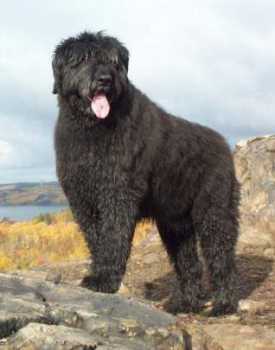The border area between England and Scotland is rocky with poor soil. Sheep raising is common, and the Border is one of many kinds of dogs developed for going after sheep-stealing foxes and other vermin. He is a small dog with an amazing amount of pluck for his size. The requirements for the Border called for a dog with legs long enough to enable him to cover territory swiftly and to follow a horse, but small enough to go to ground.
His ancestry is without written history, but stems from many of the same origins as the other terriers of northern England. He was previously known as the Reedwater Terrier or the Coquetdale Terrier for valleys or localities of his early existence. He acquired his present name in 1880, perhaps because he was so commonly worked with the Border Foxhounds.
The allowable color of blue and tan suggests a similar background to the Bedlington (whose original members were smaller than the present breed). He probably shares an ancestry with the Dandie Dinmont and the Lakeland as well. Even today an occasional whelp has the soft topknot.
The Border Terrier has not earned the recognition of some of his British relatives, but he is slowly gaining a foothold in the doggy community. In fact, when he was granted English Kennel Club acceptance in 1920, many terrier men were incensed, fearing he would be "prettified" into a show dandy. That fear has not been realized, and he retains his rough-and-tumble looks and qualities. Even though he is recognized by canine governing bodies, his lack of wide exposure in the show ring or as an over-popular pet has maintained his working attributes.
One advantage of the breed is the close, broken coat that affords him protection in the fields. It does not need to be stripped like that of the Wire Fox Terrier, Lakeland Terrier and many others. The standard states that a dog with correct coat should need but a slight "tidy-ing-up of the head, neck, and feet" to go into the show ring. His small size and alert but obedient demeanor make him a marvelous watchdog and companion! as well as a competition-quality obedience dog. Although game, he is not quarrelsome with other dogs. His tail is un-docked and carried gaily.
The Border's head should look "like that of an otter," with a broad flat skull, a gradual stop, and a semi-blunt muzzle. He should be built rather narrowly through the shoulder and rear to allow him access to the burrows of foxes and martens.
Breeds navigation
Spiked dog collar
Attack Leather dog harness
|

